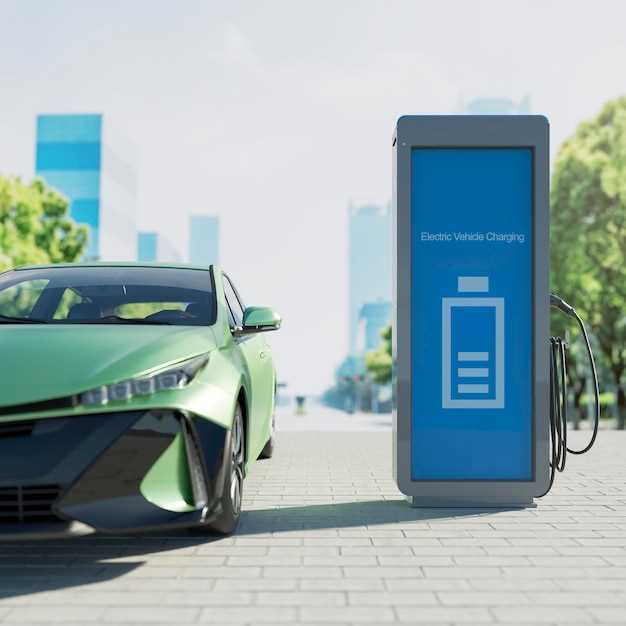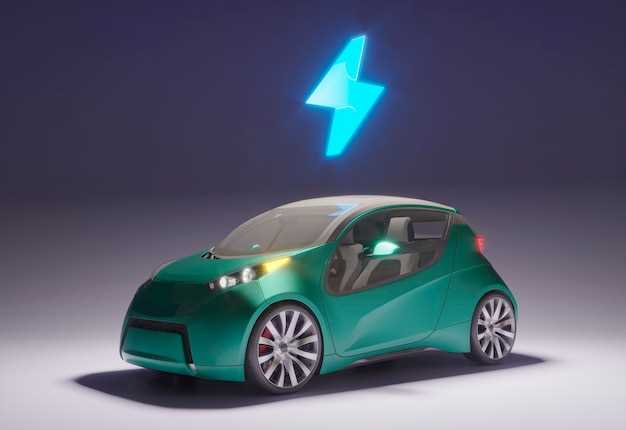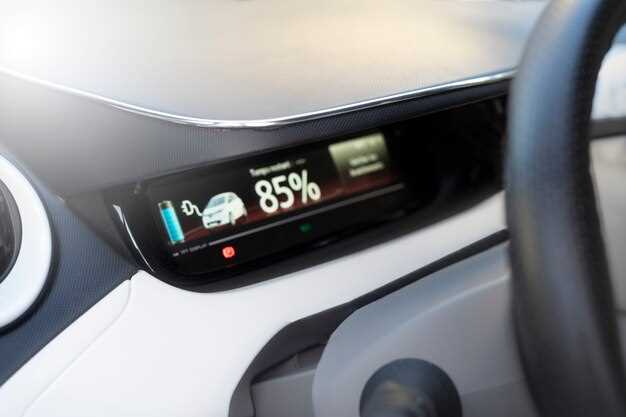Range Comparison – Audi EVs in 2025

The automotive landscape is rapidly evolving, with electric vehicles (EVs) taking center stage. Audi, a pioneer in luxury performance automotive engineering, is no stranger to this transformation, having established its e-tron lineup as a strong contender in the EV market. As we look ahead to the 2025 model year, it is essential to examine the advancements in range and technology that Audi is bringing to its electric vehicle offerings.
With a keen focus on sustainability and innovation, Audi’s commitment to electric mobility is evident in the enhancements made to its e-tron series. This article will delve into a detailed comparison of the anticipated range capabilities of Audi’s 2025 EV models, analyzing how they stack up against competitors and previous iterations. Whether you are an EV enthusiast or considering making the switch to electric, understanding the range and performance metrics of these models is crucial.
By evaluating the specifications of Audi’s upcoming e-tron models, we aim to provide a comprehensive overview that highlights their potential impact on consumer choices in the ever-growing electric vehicle market. Join us as we explore what the future holds for Audi EVs and how their range and efficiency are set to redefine luxury electrification in 2025.
Audi e-tron Range Specifications
The Audi e-tron lineup is designed to offer impressive driving ranges, ensuring that electric mobility meets the needs of modern consumers. Here are the specifications related to the range of the 2025 Audi e-tron models:
- Audi e-tron 55:
- Battery Capacity: 95 kWh
- Estimated Range: up to 250 miles (402 kilometers) on a full charge.
- Charging Time: Approximately 30 minutes to 80% at fast-charging stations.
- Audi e-tron Sportback:
- Battery Capacity: 95 kWh
- Estimated Range: around 243 miles (391 kilometers).
- Efficiency: 1.9 miles/kWh in optimal conditions.
- Audi Q8 e-tron:
- Battery Capacity: 106 kWh
- Estimated Range: up to 300 miles (483 kilometers) based on driving conditions.
- Charging System: Dual charging capability for enhanced convenience.
The range of these models may vary based on driving style, terrain, and weather conditions. Audi’s efficient energy management systems optimize the range, providing a sustainable driving experience.
To enhance the user experience, Audi offers regular software updates, ensuring that range performance is constantly optimized for different types of journeys.
In addition, Audi continues to invest in its charging infrastructure, providing solutions that further extend the usability of the e-tron range, making charging as accessible as possible for all users.
Battery Capacity and Performance Insights

The 2025 Audi EV lineup showcases significant advancements in battery technology, directly influencing range and overall performance. Each model has been engineered to optimize energy density, resulting in larger battery capacities that enhance driving ranges compared to previous versions.
For instance, models like the Audi Q8 e-tron feature a battery capacity reaching up to 114 kWh, which provides a substantial range of approximately 300 miles on a single charge. This improvement is attributed to Audi’s innovative battery management system, maximizing efficiency while minimizing energy loss during driving.
In addition to sheer capacity, the performance of Audi EVs is marked by rapid acceleration and top-notch handling. The combination of a robust battery and advanced electric motors allows these models to deliver torque almost instantaneously, elevating the driving experience. This performance-rich characteristic not only enhances agility but also ensures that the vehicles maintain an impressive range across varied driving conditions.
Moreover, Audi is implementing state-of-the-art thermal management systems to maintain optimal battery temperatures, further improving performance during high-demand scenarios. This innovation not only safeguards the battery’s longevity but also ensures consistent performance regardless of external conditions.
As we look ahead to 2025, Audi’s commitment to electric vehicles is evident. The integration of high-capacity batteries paired with sophisticated engineering will undoubtedly revolutionize the EV landscape, making range anxiety a thing of the past.
Real-World Range vs. Manufacturer Claims
When considering electric vehicles (EVs), it’s essential to understand the difference between manufacturer-claimed range and the real-world range that drivers typically experience. Manufacturers often test their vehicles under ideal conditions, which can differ significantly from everyday usage. Factors such as driving style, terrain, and climate can greatly influence the distance an EV can cover on a single charge.
For instance, Audi, known for its high-performance vehicles, estimates the range of its 2025 models under laboratory conditions. However, actual driving conditions can lead to variations. Users might find that the real-world range is lower than advertised, especially in urban environments with frequent stops and starts or in colder climates where battery efficiency can be compromised.
The following table summarizes the range claims made by Audi for its 2025 EV models compared to average real-world range experiences reported by drivers:
| Model | Manufacturer Claimed Range (Miles) | Real-World Range (Miles) |
|---|---|---|
| Audi e-tron GT | 238 | 210 |
| Audi Q4 e-tron | 250 | 225 |
| Audi Q8 e-tron | 300 | 265 |
As shown in the table, the difference between manufacturer claims and real-world performance often narrows the operating envelope for potential buyers. It’s crucial for consumers to consider these variations when evaluating which EV to purchase. Transitioning to an electric vehicle involves understanding these nuances to ensure that the selected model meets practical daily driving needs.
Factors Affecting EV Range in Audi Models
Several key factors influence the electric vehicle (EV) range of Audi’s e-tron models, which are essential for understanding their performance capabilities. The most prominent factor is battery capacity. Audi employs high-capacity battery packs in its e-tron lineup, with varying sizes that directly impact the overall range. Larger batteries generally provide a longer driving distance on a single charge.
Another significant element is the vehicle’s weight and aerodynamics. Heavier cars require more energy to move, thus reducing the effective range. Audi’s e-tron models feature advanced design techniques, ensuring an optimal balance between performance and efficiency. Streamlined shapes and materials contribute to decreased drag, enhancing overall efficiency.
The efficiency of the electric drivetrain also plays a crucial role in determining the range. Audi has developed sophisticated electric motors and energy management systems that optimize power distribution. This technology maximizes the energy extracted from the battery, ensuring that drivers can travel further on their EVs.
Environmental conditions significantly affect range as well. Factors like temperature, terrain, and driving style can influence energy consumption. Colder weather often results in increased energy usage for heating, while hilly terrains may require more power for ascents. Audi’s e-tron models come equipped with features to mitigate some of these effects, such as heat pumps and regenerative braking systems that reclaim energy during deceleration.
Lastly, charging infrastructure and battery technology advancements also play a vital role in the overall EV experience. Audi continues to invest in fast-charging networks, enabling shorter charging times and thereby allowing drivers to travel further with minimal downtime. As battery technology evolves, improvements in chemistry and sustainability are expected to further enhance range capabilities in future e-tron models.
Charging Options and Their Impact on Range
As Audi introduces its 2025 EV models, understanding the available charging options is crucial for maximizing electric vehicle (EV) range. Charging methods can significantly influence how far drivers can travel between charges, directly affecting the overall ownership experience.
AC Charging is a common method for home charging, typically utilizing Level 2 chargers. These chargers provide a steady supply of power, allowing for overnight charging that can replenish most of the battery capacity. However, the charging speed may vary based on the vehicle’s onboard charger capabilities. For instance, Audi’s 2025 models are expected to feature enhanced onboard chargers that optimize charging times and improve range efficiency.
DC Fast Charging, on the other hand, is vital for long-distance travel. Found at public charging stations, this method can rapidly recharge an EV’s battery, providing substantial range in a short period. Audi has committed to expanding its network of fast chargers, ensuring drivers can quickly recharge during longer trips. Importantly, the rate of charge influences battery health, so frequent high-speed charging can impact long-term range and performance.
The availability of plug-in hybrid options also plays a role in range considerations. These vehicles combine a traditional combustion engine with an electric motor, allowing drivers to switch between power sources. While these hybrids can offer greater flexibility, relying on electric mode solely will bring range constraints that are dictated by battery size and efficiency.
Battery management systems in Audi’s upcoming EVs will optimize energy usage, ensuring drivers make the most of their charging options. Effective use of regenerative braking can also help increase range by converting kinetic energy back into stored energy during deceleration.
In summary, the choice of charging options is pivotal for Audi’s 2025 EV models, as they determine how effectively drivers can utilize their range. With advancements in charging technology and battery management, the impact of these options on range will continue to evolve, providing consumers with more flexibility and confidence in their daily driving experiences.
Comparative Analysis with Competitors

The Audi e-tron series is positioned in a competitive segment of the electric vehicle (EV) market, where range and performance are critical factors for consumers. As we approach 2025, it becomes essential to analyze how Audi’s offerings compare with those of its primary competitors, such as Tesla, Ford, and BMW.
One of the standout features of the Audi e-tron models is their impressive range capabilities. The latest projections for the 2025 e-tron lineup suggest a range exceeding 300 miles on a single charge. In contrast, Tesla’s Model Y and Model 3 have consistently showcased ranges around 350 miles, setting a high benchmark in the EV industry. However, Audi’s advanced battery technology and efficient power management systems allow for competitive performances that are not far behind.
Moreover, Ford’s upcoming models, including the electric version of the popular F-150, are expected to offer range figures similar to those of the Audi e-tron, with estimates nearing 300 miles. This indicates Ford’s significant investment in electric technology, aiming to capture market attention through practicality and performance.
BMW’s electric models, such as the iX3 and i4, focus on combining luxury with power. While their range figures are respectable, they often fall slightly short when compared to Audi e-tron and Tesla models. BMW’s emphasis on driving dynamics may appeal to a niche market, but for consumers prioritizing range, Audi’s offerings provide a compelling alternative.
In conclusion, while the Audi e-tron range is highly competitive, it faces formidable rivals. Audi’s focus on enhancing range and technology positions it well against competitors like Tesla, Ford, and BMW. As the EV market continues to evolve, maintaining an edge in range will be crucial for Audi to ensure its place among the leaders in electric mobility.




